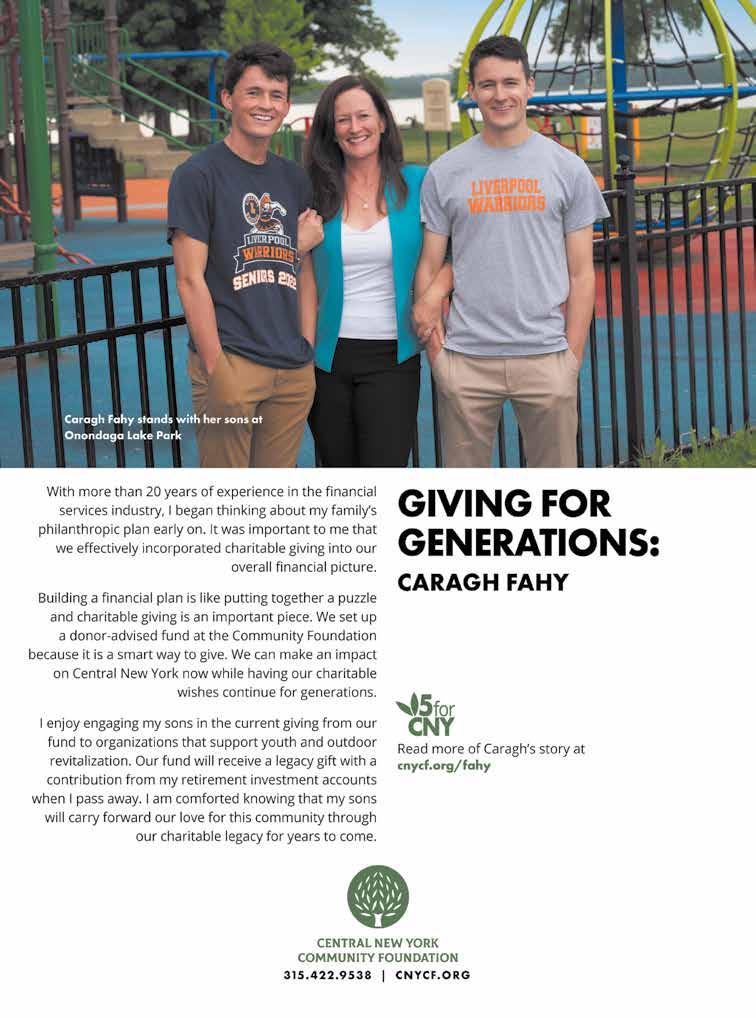
3 minute read
Liz Cox
Gone are Fremont’s days of seeing individual adults for appointments, but she said her attention to treating patients in the age range of newborn to 18 years old has always incorporated talks with the parents, other older family members and school district representatives within that context.
“You can’t treat a child in a vacuum,” Fremont said, adding that the choice to specialize in child and adolescent psychiatry requires precursory training in the realm of adult care.
On the heels of child and adolescent mental health being declared a national emergency last year by the American Academy of Pediatrics, the American Academy of Child and Adolescent Psychiatry and the Children’s Hospital Association, Fremont is joining the effort to combat a shortage of treatment facilities, a lack of available beds, waiting lists that stay stagnant for up to six months, and the disparity between the demand for services and the amount of licensed child psychiatrists.
Along with those common sights, she points to a record number of kids that are presenting to emergency rooms and a statistic that one out of five children and adolescents is in need of mental health care.
That’s why the Upstate Foundation is looking to bring in funders and philanthropic investment for a $3 million campaign to increase clinical capacity, boost access to service providers and back issuepreventative work for families. extended period of time and the lessened socializing that came with quarantine, Fremont said.
But the numbers were already rising before COVID, she clarifies, noting that the number of adolescent suicides had doubled between the years 2010 and 2017. She also attributes mental anguish to certain family dynamics and the trickle-down effect of other nationwide problems having to do with such concerns as the economy and race relations.
“Kids are like sponges—they pick all of our societal woes up,” Fremont said.
She also sees the effects of social media and the proliferation of cell phones among younger crowds as stressors.
“Now there’s no end to bullying because it continues on the phone,” she said. “You don’t just come home at 3 p.m. after school and the bullying ends. It can be midnight and you can be bullied even though you’re not at school.”
She said social media platforms have a tendency to showcase the uninterrupted highlights of others’ lives or a distortion of reality, thereby perpetuating stereotypes of what girls and boys should act or look like and causing drops in self-esteem when comparisons are made with the profile pages on a timeline.
On the brighter side, Fremont said the stigma attached to mental health is slowly eroding, in part due to the heightened presence of
therapists on school grounds and the underscoring of self-care in the workplace.
However, along with suggestions to buck up and notions that such problems are “all in one’s head,” she said there are still insurance companies that don’t treat mental health issues the same way they treat physical ailments and injuries.
“If you have your appendix out or break an arm, insurance will cover for it, but if you have anxiety, some will cover five visits maybe depending on the policy,” Fremont said. “There’s huge discrimination with health insurance policies.”
She said measures can be taken on one’s own time to work on better-ing their mental health through meditation and exercise, but she said professional help from a therapist is akin to personal training as long as overmedication is avoided. The fine-tuning resulting from therapy can come from relaying self-soothing skills to those with trauma and coping skills to someone on the verge of a meltdown, she said.
“The therapist helps you to put words to your feelings and understand where they’re coming from so that you don’t act out on them,” Fremont said.
When it comes to giving back and embracing her passion as a psychiatrist, Fremont said she finds a rewarding and humbling aspect in witnessing the “resiliency” and smiles of the kids she treats. SWM
















